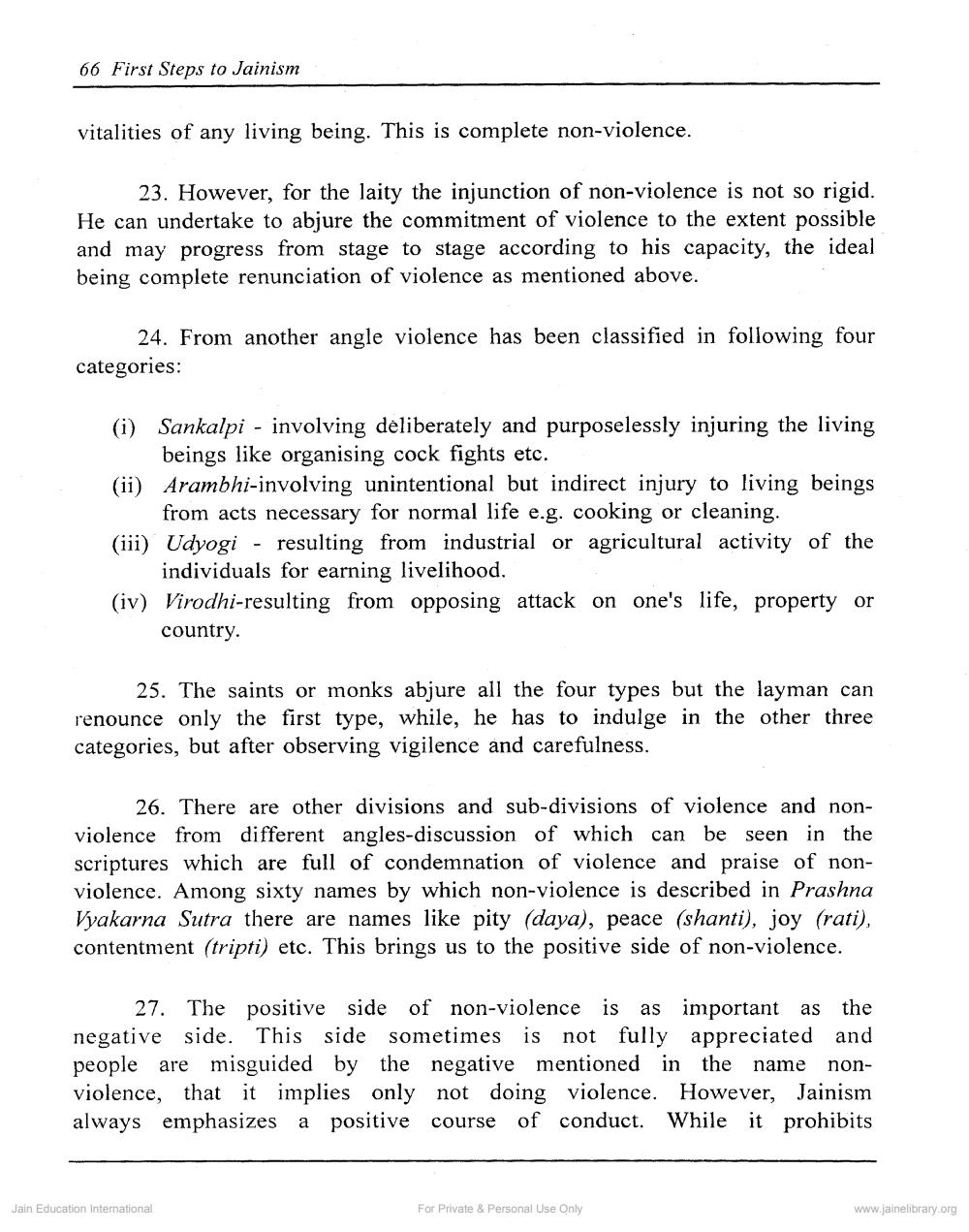________________
66 First Steps to Jainism
vitalities of any living being. This is complete non-violence.
23. However, for the laity the injunction of non-violence is not so rigid. He can undertake to abjure the commitment of violence to the extent possible and may progress from stage to stage according to his capacity, the ideal being complete renunciation of violence as mentioned above.
24. From another angle violence has been classified in following four categories:
(i) Sankalpi - involving deliberately and purposelessly injuring the living
beings like organising cock fights etc. (ii) Arambhi-involving unintentional but indirect injury to living beings
from acts necessary for normal life e.g. cooking or cleaning. (iii) Udyogi - resulting from industrial or agricultural activity of the
individuals for earning livelihood. (iv) Virodhi-resulting from opposing attack on one's life, property or
country.
25. The saints or monks abjure all the four types but the layman can renounce only the first type, while, he has to indulge in the other three categories, but after observing vigilence and carefulness.
26. There are other divisions and sub-divisions of violence and nonviolence from different angles-discussion of which can be seen in the scriptures which are full of condemnation of violence and praise of nonviolence. Among sixty names by which non-violence is described in Prashna Vyakarna Sutra there are names like pity (daya), peace (shanti), joy (rati), contentment (tripti) etc. This brings us to the positive side of non-violence.
27. The positive side of non-violence is as important as the negative side. This side sometimes is not fully appreciated and people are misguided by the negative mentioned in the name nonviolence, that it implies only not doing violence. However, Jainism always emphasizes a positive course of conduct. While it prohibits
Jain Education International
For Private & Personal Use Only
www.jainelibrary.org




